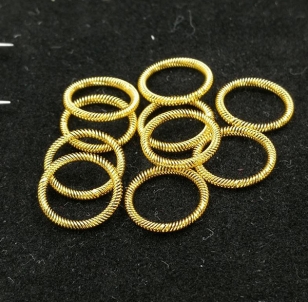A bevel coil spring is a mechanical part that works with elasticity. It is usually made of spring steel. It is used to control the movement of mechanical parts, reduce shock or oscillation, store, measure the amount of force, etc. It is widely used in machines and instruments. The types of springs are varied. According to the shape, there are mainly bevel coil springs, leaf springs, etc.
According to the nature of the force, springs can be divided into tension springs, tightening springs, torsion springs and bending springs. According to the shape, it can be divided into disc spring, ring spring, leaf spring, coil spring, conical scroll spring and torsion bar spring. Generally, cylindrical springs are widely used because of their simple production, and various types can be made simply according to load conditions and structure.

Generally speaking, the material of the spring should have high elasticity, exhaustion, impact toughness and good heat treatment performance. Commonly used spring steels include carbon spring steel, alloy spring steel, stainless steel spring steel, copper alloy, nickel alloy and rubber. The spring production method has cold plate method and hot plate method. When the diameter of the spring wire is less than 8mm, the cold plate method is generally selected, and the hot plate method is selected for springs larger than 8mm. Some springs should be pressurized or shot peened after production to improve the load-bearing capacity of the spring.
In general, the functions of springs can be summarized as follows:
1. Adjust mechanical operations, such as valve springs for internal combustion engines, clutch control springs, etc.
2. Absorb the force generated by oscillation and impact, such as cushion springs under cars and train cars, vibration damping springs in couplings, etc.
3. Store and output force as power, such as clock springs, mechanical springs, etc.
4. Used as components for testing force, such as dynamometers, springs in spring scales, etc. The spring rate can be obtained by comparing the load-bearing capacity and deformation of the spring. The higher the stiffness value, the higher the hardness of the spring. Slash coil spring
